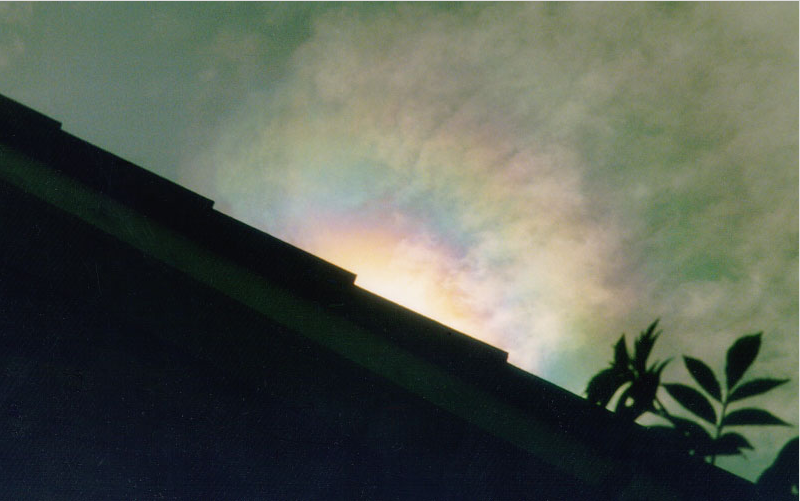Corona around the sun
Corona Around the Sun: A Spectacular Atmospheric Phenomenon
When gazing at the sky on a clear day, you may occasionally notice a brilliant ring of light encircling the sun. This mesmerizing sight is known as the corona around the sun. While it may resemble the corona of a solar eclipse, this optical phenomenon is different in nature. In this article, we will delve into the details of the corona around the sun and explore the science behind this captivating atmospheric display.
What is the Corona Around the Sun?
The corona around the sun is an optical phenomenon that occurs when sunlight interacts with tiny water droplets or ice crystals present in the Earth's atmosphere. These suspended particles act as miniature prisms, refracting and dispersing sunlight. The resulting effect is a luminous halo that appears to encircle the sun, creating a magnificent spectacle for observers on the ground.
Formation of the Corona
The formation of the corona around the sun can be attributed to a process called diffraction. As sunlight passes through the minute water droplets or ice crystals in the atmosphere, it undergoes diffraction, causing it to spread out and scatter. This scattering of light leads to the formation of concentric rings around the sun, resulting in the ethereal corona.
Optical Characteristics of the Corona
The corona around the sun exhibits several distinct optical characteristics that make it a captivating sight to behold. Here are some key features of this atmospheric phenomenon:
-
Colorful Ring: The corona often displays a range of vibrant colors, including reds, oranges, yellows, and blues. These colors arise from the diffraction and scattering of sunlight by the suspended particles in the atmosphere.
-
Variable Size: The size of the corona can vary depending on atmospheric conditions and the size of the water droplets or ice crystals present. It typically extends several degrees away from the sun, forming a sizable halo in the sky.
-
Delicate Appearance: The corona has a delicate, ethereal appearance due to the dispersion of sunlight. Its gentle, diffused light contrasts with the sharp, intense brightness of the sun, creating a captivating visual contrast.
Observing the Corona Around the Sun
To witness the corona around the sun, it is crucial to exercise caution and protect your eyes from direct sunlight. Here are some tips for observing this phenomenon safely:
-
Use Protective Eyewear: When viewing the corona, ensure you wear appropriate solar filters or eclipse glasses to safeguard your eyes from harmful solar radiation.
-
Avoid Staring Directly at the Sun: Prolonged direct exposure to the sun's intense light can cause damage to your eyes. Instead, focus your gaze on the surrounding sky to observe the corona.
-
Look for Optimal Conditions: The visibility of the corona can be influenced by atmospheric conditions such as humidity and cloud cover. Clear, sunny days with minimal haze or clouds offer the best chances for observing this phenomenon.
Similar Atmospheric Optics Phenomena
While the corona around the sun is a mesmerizing spectacle, it is not the only atmospheric optics phenomenon that can occur. Here are a few other fascinating optical phenomena that you may encounter:
-
Sun Dogs: Sun dogs, also known as parhelia, are bright spots that appear on either side of the sun. They are caused by the refraction of sunlight through ice crystals in high-altitude cirrus clouds.
-
Halos: Halos are luminous rings that encircle the sun or moon. They form when sunlight or moonlight is refracted and reflected by ice crystals in the atmosphere.
-
Rainbows: Rainbows are beautiful arcs of colors that appear when sunlight is refracted, reflected, and dispersed by raindrops in the atmosphere. They often form after rainfall when the sun emerges from behind the clouds.
Capturing the Beauty of the Corona
If you wish to capture the mesmerizing beauty of the corona around the sun, consider these photography tips:
-
Use a Solar Filter: To photograph the corona, employ a solar filter specifically designed for capturing images of the sun. This filter will protect your camera sensor from intense sunlight while allowing you to capture the intricate details of the corona.
-
Experiment with Exposure Settings: Adjust your camera's exposure settings to capture the delicate colors and fine details of the corona. Experiment with different shutter speeds, ISO values, and aperture settings to achieve the desired effect.
-
Compose Your Shot: Consider incorporating elements of the surrounding landscape or architectural structures into your photograph to add depth and context to the image.
The corona around the sun is a captivating atmospheric phenomenon that never fails to leave observers in awe. Its delicate beauty and vibrant colors serve as a reminder of the remarkable interplay between sunlight and Earth's atmosphere. So, the next time you find yourself beneath a clear sky, take a moment to look up and behold the breathtaking spectacle of the corona around the sun.

A brilliant corona rings the sun. Imaged by Peter Meadows July 1993 at Chelmsford in Essex, England. ©Peter meadows, reproduced with permission.
Note: this article has been automatically converted from the old site and may not appear as intended. You can find the original article here.
Reference Atmospheric Optics
If you use any of the definitions, information, or data presented on Atmospheric Optics, please copy the link or reference below to properly credit us as the reference source. Thank you!
-
<a href="https://atoptics.co.uk/blog/corona-around-the-sun-2/">Corona around the sun</a>
-
"Corona around the sun". Atmospheric Optics. Accessed on April 18, 2024. https://atoptics.co.uk/blog/corona-around-the-sun-2/.
-
"Corona around the sun". Atmospheric Optics, https://atoptics.co.uk/blog/corona-around-the-sun-2/. Accessed 18 April, 2024
-
Corona around the sun. Atmospheric Optics. Retrieved from https://atoptics.co.uk/blog/corona-around-the-sun-2/.